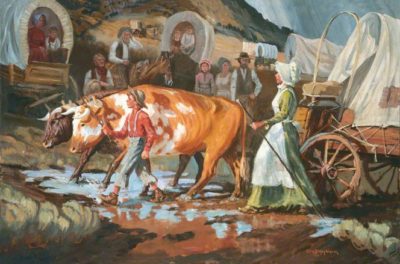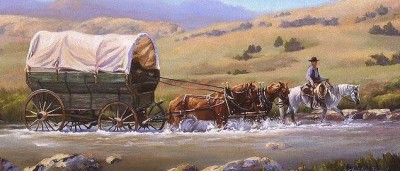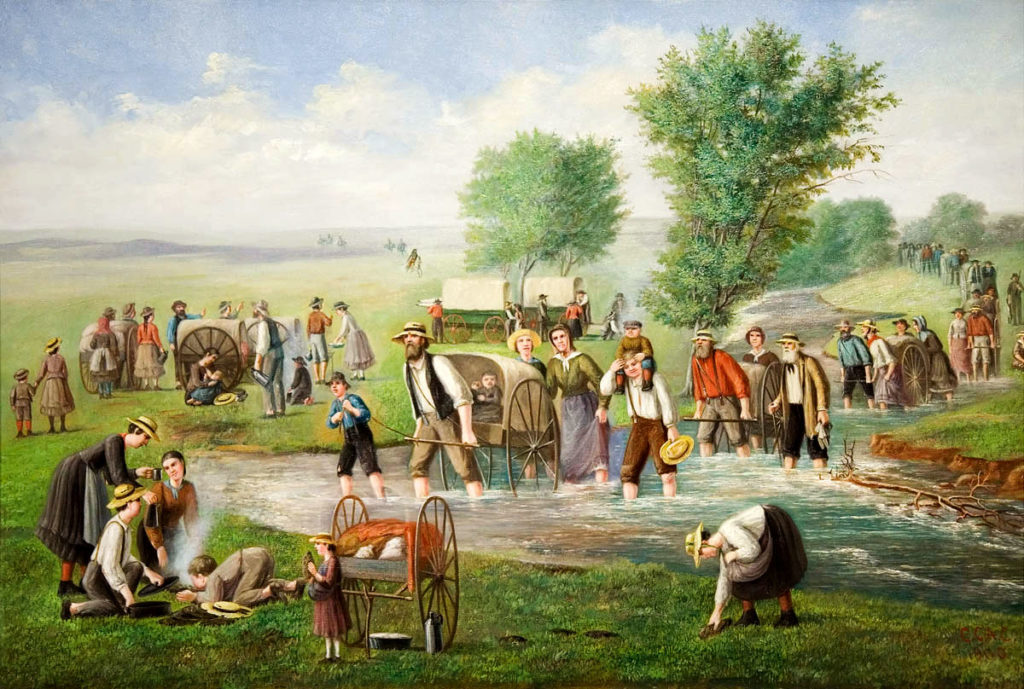History is amazing — not the dull, dry history you may have experienced in school, but the history of how people lived their day-to-day lives. We are so accustomed to our modern conveniences that we often have no idea how our ancestors did things. We look back through the years, and are often mystified about how they even survived.
Some of the things that medical science proposed in the past are laughable today. Take head bumps, for example. There was actually a time when the cutting edge of medical diagnosis, in some quarters, was reading the bumps on a person’s head. This was supposed to tell about chronic health problems that the person suffered. We can place that alongside “bleeding” a patient to release the evil spirits from their body, and bury the two of them in medical history.
Modern medicine has years of medical research behind it. While it is not yet perfect, the ability of our medical community to deal with trauma, sickness and chronic health issues is much greater than that of a few short generations ago. Treatments for diseases that were previously known as killers are available now, and emergency room techniques to save lives have progressed exponentially.
Learn How You Can Make Powerful Herbal Medicines, Right in Your Kitchen!
All of that is enough to make us wonder how our ancestors even survived. Looking back in history — say to the pioneering days — one has to wonder how the people dealt with sickness, disease and injury, especially when you consider that most towns didn’t have a doctor. Yes, many died, but many more lived, and lived through things that we wouldn’t think they could have survived.
The conventional wisdom today is that people in the 1800s lived far shorter lives, but that is mostly not true. The average life expectancy has grown because of lowering infant mortality rates. In other words, for people who did survive childbirth, many lived to old age – 70s, 80s and even 90s.
The very fact that they survived tells us that we study what they did. We may yet see a day when all the fancy pharmaceuticals and medical laboratories are gone. Should that happen, the health techniques that our ancestors used may very well be the only thing left to us.
So, what did they do? Let’s take a look.
1. They ate healthier
When you talk about “American food” in other countries, the first thing any of them think of is McDonalds, Burger King and Coca-Cola, perhaps adding Starbucks to that list. This is the food that we are known for. Most of what we consume is either fast food, junk food or otherwise unhealthy food.
Our bodies need an incredible number of different nutrients to maintain health. Theoretically, we are supposed to receive those nutrients from what we eat. But donuts, greasy burgers and a side order of fries don’t supply those nutrients. Some people try to make up for this by taking vitamin supplements, but there’s a real question about how well those supplements absorb into the body. Some brands don’t dissolve properly and merely add to the waste our bodies process.
 While the diet our pioneering ancestors enjoyed wasn’t as varied as our own, it was a whole lot healthier. Essentially, they ate meat, beans, vegetables and bread. Fruit was considered a delicacy, and things like sweets were extremely rare. Their favorite drink was fresh spring water — not sugar dissolved in carbonated water.
While the diet our pioneering ancestors enjoyed wasn’t as varied as our own, it was a whole lot healthier. Essentially, they ate meat, beans, vegetables and bread. Fruit was considered a delicacy, and things like sweets were extremely rare. Their favorite drink was fresh spring water — not sugar dissolved in carbonated water.
Not only did they eat a healthier diet, but the foods they ate were healthier than today’s equivalent. Cattle and hogs weren’t fattened up to the extent they are today, before slaughtering. Often they were grass-fed. But many pioneers ate game meat, which has always been leaner and lower in cholesterol. Even chickens were healthier, as they free ranged and fed off a more varied diet. The ground hadn’t been overworked, and so the vegetables that they ate had a higher mineral content, improving their nutritional value.
Nobody overate in the Old West. There just wasn’t enough extra food to even think of overeating. Besides, they burned a whole lot more calories wrestling steers or plowing with a horse-drawn plow, than we do punching keys on a computer.
2. They performed physical work
Our bodies need a certain amount of physical work to maintain health. Yet, except for those who go to the gym regularly to work out – or do hard labor on the job — few of us get that physical work.
Many of our chronic diseases were all but unknown in pioneering days. The physical work that people performed on a daily basis was enough to help their bodies regulate the critical balance of these key health indicators.
Even today, the best advice for a diabetic, whose blood sugar is high, is to take a walk. That allows their body to burn off some of that excess sugar, reducing their sugar level to normal. Yet most of us expect the doctor to fix our problems with medicine, rather than having to do anything to takes us out of our comfortable chairs.
3. They were leaner and more muscular
The combination of diet and exercise affected their bodies greatly. More than anything, if we were to look back in history, we would see a people who were leaner and more muscular than we are today. This came from a combination of hard physical work and diet.
 Even housework was harder back then. Women had to have the physical strength to wring out clothes by hand, carry a dead animal to the kitchen to slaughter it, and draw their own water from the well. Most jobs that men performed required much more strength than what we have today. In fact, the average worker today probably couldn’t make it through a day of work back in pioneering days.
Even housework was harder back then. Women had to have the physical strength to wring out clothes by hand, carry a dead animal to the kitchen to slaughter it, and draw their own water from the well. Most jobs that men performed required much more strength than what we have today. In fact, the average worker today probably couldn’t make it through a day of work back in pioneering days.
Beet Powder: The Ancient Secret To Renewed Energy And Stamina
We face a chronic nationwide obesity crisis, something that could not have existed back then. Oh, there were very fat people, but they were rare. Their lifestyle just didn’t offer much opportunity to store energy as fat. You were much more likely to find fat people in the settled areas of the east and west coasts, where there were more people who worked in sedate offices and stores.
4. They had more knowledge of natural medicine
Humans are very adaptable creatures. When we don’t have one thing we need, we tend to try and find something to use as a substitute. Our ancestors did this with medicine. Since they didn’t have all our modern medicines, they used what they had … what nature gave them.
Actually, many of our modern medicines are substitutes for what nature supplies. All medicines start in nature. Pharmacies, though, didn’t exist in the Old West. The only medicines around were in the doctor’s office (if there was a doctor) or the general store. So, people did what their ancestors had done and used what nature provided. In many cases, those medicines were just as good or even better than the ones we have today.
It wasn’t just doctors who had knowledge of herbal medicine; most people had at least some. It was not uncommon for a woman to grow medicinal herbs in her garden or for a cowboy to pick up plants along the way, when they had a toothache or upset stomach. Herbal medicine was as much a part of life as anything else.
What would you add to this list? Share your insights in the section below:
Harness The Power Of Nature’s Most Remarkable Healer: Vinegar
 Off The Grid News Better Ideas For Off The Grid Living
Off The Grid News Better Ideas For Off The Grid Living




